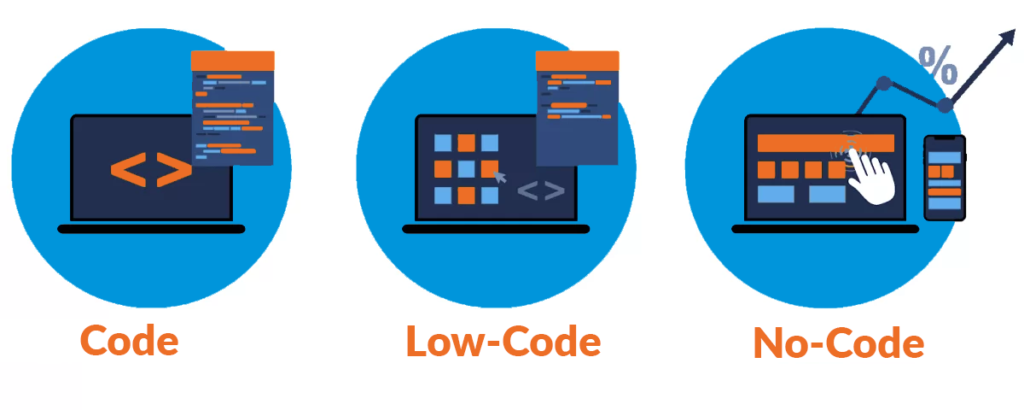What is it?
Visit No Code and the Low Code are two approaches to software development which have gained in popularity in recent years. Their aim is to make software development more accessible, faster and more efficient.
Visit No Code is a development approach that lets you create applications without the need for programming skills. It involves using tools that enable you to create applications using a visual interface, by dragging and dropping elements or using wizards, without having to write a single line of code.
Visit Low Codeis an approach that aims to minimize the amount of hand-coding required to develop an application, as well as a simplified approach to code. It also uses visual tools, but allows custom code to be inserted when required for more complex functionality.

Differences
Although No Code and Low Code have much in common, there are some notable differences between the two. No Code platforms are designed to enable users with no coding skills to create applications using reusable building blocks. Low Code platforms, on the other hand, require a certain amount of coding. They enable developers to produce new applications more easily and quickly, thanks to the creation of reusable building blocks.
Benefits
The advantages of No Code and Low Code are numerous. For companies, one of the main advantages is development speed. No Code and Low Code platforms enable applications to be developed much faster than traditional coding methods. This means that companies can respond more quickly to the changing needs of their customers and the market.
What's more, these platforms enable greater participation by the whole team in the development process. Non-developers can participate in the creation of applications, which can lead to more creative solutions that are closer to the needs of end-users.
Application cases for each
No Code and Low Code platforms can be used for a wide variety of applications. For example, they can be used to create in-house enterprise applications, mobile applications, websites, content management systems, e-commerce applications and much more.
In marketing, for example, the No Code and Low Code platforms can be used to rapidly create data analysis tools, marketing automation systems, content management platforms and other tools needed for modern marketing campaigns.

No Code in the oOTARY Builder module

At oOTARY, we recognize the importance of democratizing software development, which is why we have integrated the No Code approach into the " Builder "of our middleware Armony Solution.
Intuitive Assistants Thanks to intuitive wizards, Armony Builder makes it possible for anyone to create editions, even without in-depth knowledge of SQL. These wizards guide the user through each step of the process, making application creation as easy as following a recipe.
Visual User Interface The Builder module's user interface is designed to be visual and easy to use. Users can drag and drop elements, connect components, and visualize the entire application structure without having to write a single line of code.
Save time and resources With Armony Builder, companies can significantly reduce the time and resources required for application development. Reducing the need for manual coding allows teams to focus on innovation and problem-solving, rather than on repetitive, time-consuming tasks.
Conclusion
In conclusion, No Code and Low Code are software development approaches that offer many advantages. They enable faster development, greater involvement of the whole team, and greater flexibility to meet changing business and market needs. Whether you're a small company looking to develop your first application, or a large enterprise looking to speed up your development process, No Code and Low Code have a lot to offer.






